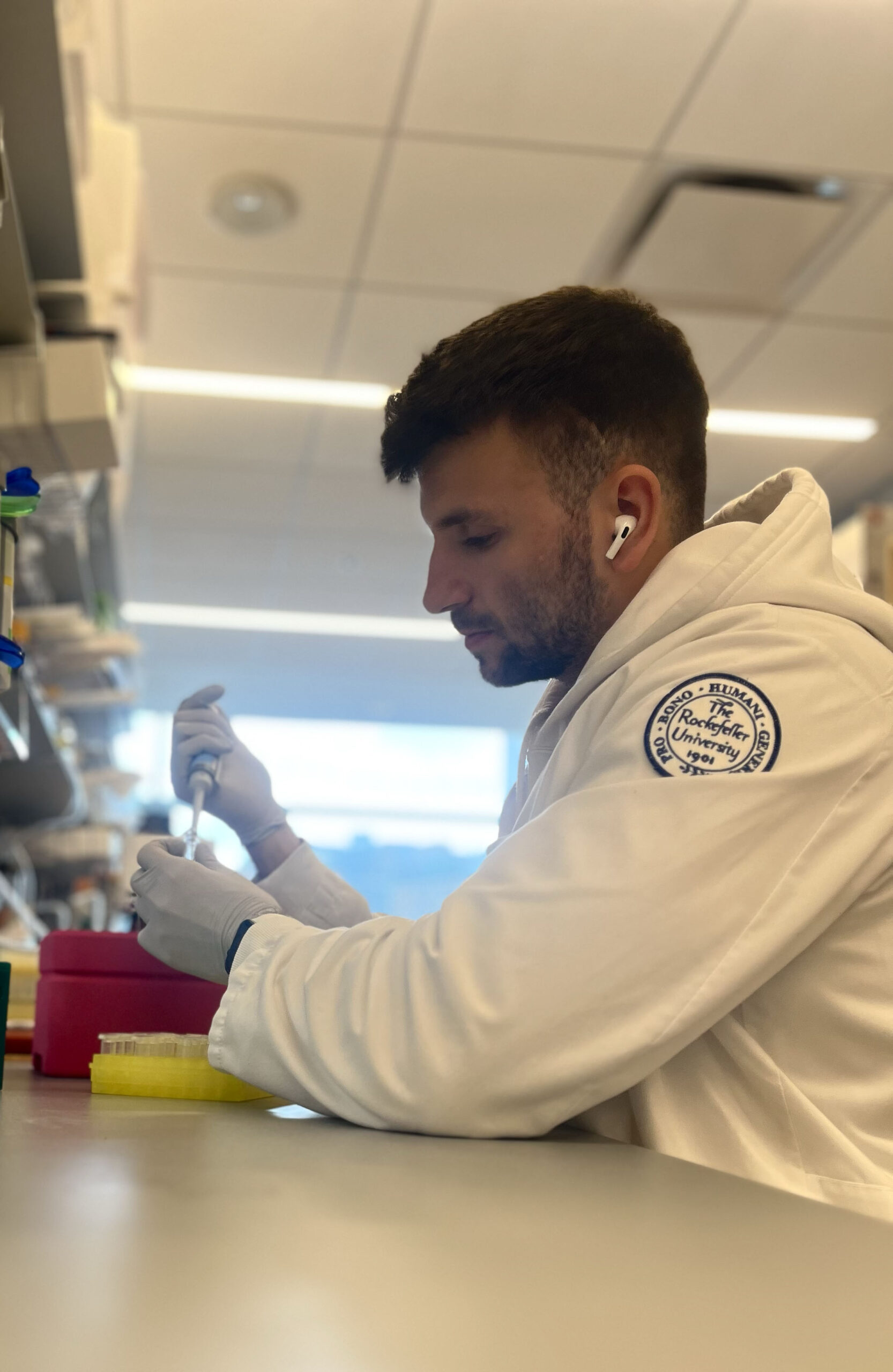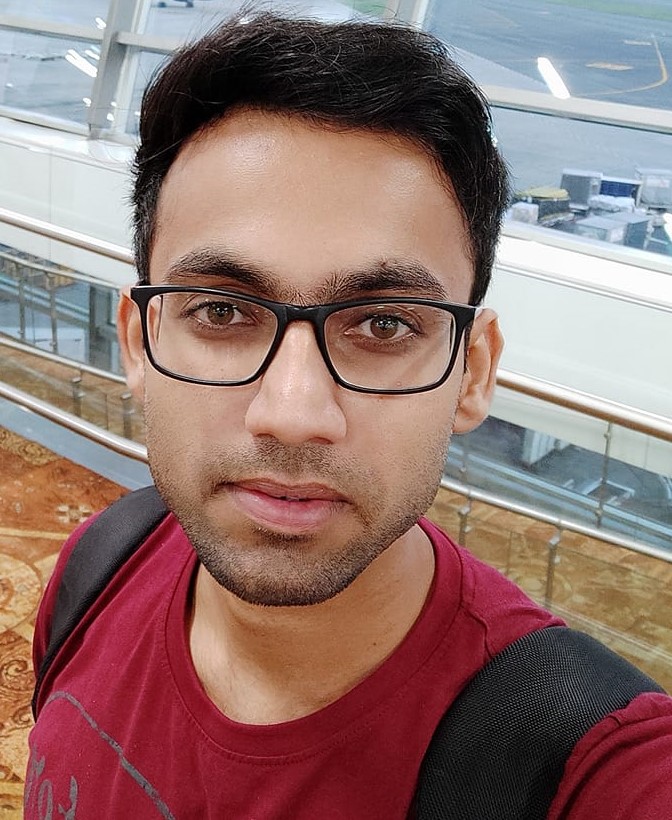Training with the NCDIR
Our Center represents an important resource of instrumentation, software, methods, and expertise that we have developed and optimized. The overarching goal of the NCDIR is to enable the widest range of researchers in the biomedical community to access our interactomics pipeline resource, and to transfer the pipeline technology to researchers’ laboratories. One major method to achieve this goal is to create a body of researchers from a wide diversity of fields who are trained in the use of NCDIR technology. These researchers will, in turn, act as nuclei to seed further spreading of our approaches in the community.
Our Center places great value in scientists training scientists and this training provides direct scientist-to-scientist training for trainees who want to learn and/or apply a tool (method, technology) to their own science. The NCDIR visiting scientist program trains scientists who desire to apply NCDIR science or technology directly to their research. Initially, to ensure quality control and standard operating procedures, this hands-on training occurs at one of the Center locations (Rockefeller University, UCSF, or Center for Infectious Diseases Research). Once the scientist is trained (i.e., knowledge transfer of NCDIR science or technology), NCDIR scientists continue to interact with the scientist remotely, or through additional direct interactions and further technology advancement at an NCDIR site or at the scientist’s home institution/lab. Thus, our cross-institutional training is one of the ways in which the expertise gained through the NCDIR is transferred to the community. Furthermore, providing training also has the added benefit of encouraging scientists to learn new techniques in a collaborative learning environment. The scientists in the Driving Biomedical Projects (DBPs) and Collaborations and Service Projects (C&SPs) also provide hands-on training for other scientists.
Since 2018 our labs have provided direct hands-on training to 93 investigators/students, including 75 scientists from 7 states in the US and 18 scientists from 5 foreign countries; representing a highly active and successful outreach of the Center through user training. The NCDIR currently has over 60 active collaborations from over 40 institutions. If you are a scientist seeking in-depth training, typically we ask that you seek to collaborate with one of our scientists, and then visit one of the labs on a longer-term basis (i.e. several months). The role of the Center in our collaborators’ work is acknowledged through listing the P41 (P41 GM109824/GM/NIGMS NIH HHS/United States) as grant support in their publications or acknowledge the fact that they got help for the NCDIR funded by the P41 grant.
Visiting scientist and reciprocal training program. Generally, to set up training with the NCDIR, community scientists contact a NCDIR scientist (including the PIs) at the institution where the training should best occur. Alternatively, NCDIR personnel reach out to scientists to inform them of the potential contributions NCDIR can make to a project. The training provided is based on the scientific challenge at-hand, and the current status of the NCDIR method or technology. Hands-on direct contact training will occur at one of the Center institutions to ensure quality control and standard operating procedures are followed. Fully equipped benches and adjacent workstations are dedicated and made available for NCDIR visiting scientists; surrounded by the interactomics equipment (cryomilling stations, 96-well solution handling and screening equipment, HPLCs and FPLCs, mass spectrometers, and computer workstations) needed to complete the training, as well as on-hand NCDIR members with the appropriate expertise. Thus, the NCDIR visiting researcher has everything they need within a few paces of their bench for being trained on taking their samples from frozen cells to multiple analytic stages. Once the research, technology, method, or software is proven to be robust within the Center, NCDIR scientists can then visit the trainee’s lab to train these scientists at their home institutions. In this way NCDIR scientists are able to provide hands-on training to teach trainees to directly apply our methods, technologies, and/or modeling to their own research.
The NCDIR Fellows Program. We have developed a Fellows program to provide trainees within the NCDIR the opportunity to receive hands-on training in a specific research, technology, method or computational tool to help further their own research. We have leveraged the framework of the Fellows program from within the NCDIR to trainees in the greater biomedical community. Our current and previous Fellows are listed below.
If you are interested in collaborating with one of our researchers, visit our About Us page to contact the four PI’s directly or contact admin@NCDIR.org!
Training with the NCDIR can also be done virtually via our video links which can be accessed here.
Trainee Profile
5 minutes with visiting trainee Apostolos Mourtzinos
 What is your position at your institution and where are you from? Although I am originally from Greece, I studied Biology (BSc) at the University of Sheffield in the United Kingdom. As for my current position at my institution, I’m not affiliated with an academic institution at the moment, as I’ve just graduated. However, I will soon start my PhD at the University Medical Center Groningen.
What is your position at your institution and where are you from? Although I am originally from Greece, I studied Biology (BSc) at the University of Sheffield in the United Kingdom. As for my current position at my institution, I’m not affiliated with an academic institution at the moment, as I’ve just graduated. However, I will soon start my PhD at the University Medical Center Groningen.
What are your research interests? During my academic career I have been exposed to multiple research topics in the fields of biology and biomedical sciences, varying from researching mechanisms of plant immunity to studying macromolecular interactions in human diseases. Currently, my research interests concern the role of human LINE-1 retrotransposons in healthy aging and disease. To improve our understanding of how activation of LINE-1s contributes to disease, we employ affinity capture and mass spectrometry along with other biochemical techniques to identify interactions responsible for disease progression and to dissect its mechanisms of action. Despite my focus on LINE-1 biology, I have been involved in several other projects, including the characterization of affinity-captured DNAJB1-PRKACA protein interactome in fibrolamellar hepatocellular carcinoma, a pediatric liver cancer, whose oncogenesis is driven by a genetic fusion event between DNAJB1-PRKACA.
What motivated you to collaborate and work with us? After gaining research experience in Europe, I’ve been eager to explore the research environment in the United States, particularly at a renowned institution, like the Rockefeller University. My goal is to learn new techniques for macromolecular interactome discovery that will benefit my future academic career. Additionally, I will have a chance to expand my professional network in a region known for its advanced research and the extensive expertise of its researchers.
What do you hope to gain from your experience at NCDIR? In what ways do you think the NCDIR is best equipped to help you achieve your research goals? Foremost, my primary goal is to acquire a deeper understanding of uncovering dysregulated macromolecular interactions in disease and mastering innovative data analysis techniques. Additionally, I intend to enhance my collaborative and interdisciplinary research skills. I have had the privilege of participating in numerous meetings and discussions at NCDIR. These interactions have been invaluable in expanding my knowledge of cutting-edge research and data integration techniques. NCDIR’s reputation and the diverse expertise of its team make it an ideal place for me to interact with professionals from various fields. I believe that NCDIR is best equipped to help me achieve these specific goals due to its expertise in data integration, the collaborative environment it fosters, and the opportunities for the practical application of research methodologies. I am excited to be part of this organization and look forward to a fruitful and enriching experience.
Trainee Profile
5 minutes with the NCDIR’s Vipul Kumar
 Hi Vipul! What is your position within the NCDIR and where are you from?
Hi Vipul! What is your position within the NCDIR and where are you from?
I am Vipul Kumar, a Postdoctoral Scholar in the lab of Prof. Andrej Sali at UCSF. I am from India.
What are your research interests?
My research interests lie in molecular modeling of biomolecular complexes, MD simulations, and virtual screening. I am currently focused on Integrative modeling of biomolecular complexes associated with yeast prions.
What motivated you to collaborate and work with us?
I am motivated to collaborate and work with you because my current research revolves around modeling larger biomolecular complexes and understanding their structural interactions/dynamics. Collaborating with pioneering scientists in the field of multiscale modeling would undoubtedly provide me with a broader perspective on these complexes and their functions, offering greater clarity to achieve my modeling goals.
What do you hope to gain from your experience at NCDIR?
I hope to gain a deeper understanding of intracellular interaction mapping through state-of-the-art experimental methods such as cryo-ET, EM, and cross-linking. This knowledge will be instrumental in advancing my spatiotemporal modeling efforts and studying the dynamics and interactions of complexes at the mesoscale level. NCDIR is ideally equipped to help me achieve these specific goals.
Introducing our 2022 NCDIR Fellow – Neelesh Soni
The 2022 Fellow is Neelesh Soni!
 Dr. Soni is a Postdoctoral Associate in the Sali lab who is trained in applied mathematics and computational biology. His work primarily focuses on developing algorithms and software tools to solve computational biology problems such as developing scoring schemes for protein-protein interactions, stability of amino acid substitutions, and determining 3D structures of macromolecular assemblies.
Dr. Soni is a Postdoctoral Associate in the Sali lab who is trained in applied mathematics and computational biology. His work primarily focuses on developing algorithms and software tools to solve computational biology problems such as developing scoring schemes for protein-protein interactions, stability of amino acid substitutions, and determining 3D structures of macromolecular assemblies.
Previously, he has contributed to the analytical and numerical solutions related to coiled-coil protein assemblies and developed algorithms for quasi-3D problems. He has also worked on the effects of atomic packing on protein stability using geometric and machine learning algorithms. This work has led to the development of software for analyzing the impact of amino acid substitutions on protein stability and software to design novel peptide inhibitors.
Currently, he is working with members of multiple research groups, including the Rout lab, to decipher the comprehensive models of the Nucleopore complex (NPC) and its sub-complexes for different model systems. The work involves the Integrative modeling of the functionally important NPC nuclear basket that is majorly composed of coiled-coil proteins and remains a mystery. The nuclear-basket proteins are part of a dynamic interactome involved in various processes such as regulating the chromatin crowding near the central transporter, contributing to the NPC position and stability, and providing docking sites for cargo transport. NPC basket models would be a starting point to many independent NPC-related discoveries. Apart from this, NPC basket models would also contribute to the NPC neighborhood mapping and related cancer mutations.

